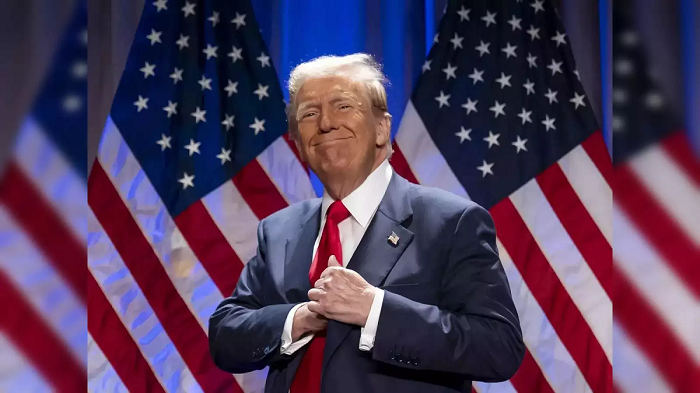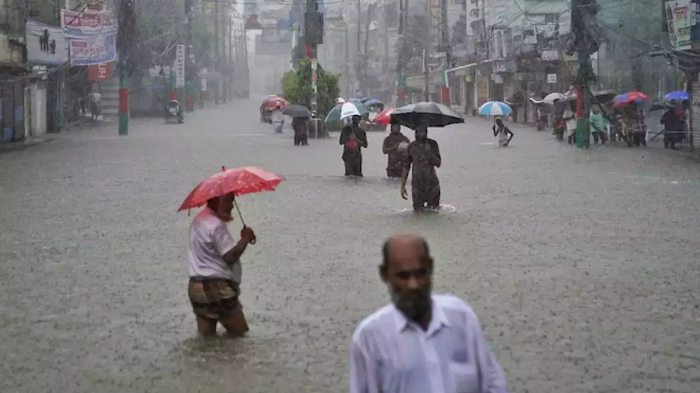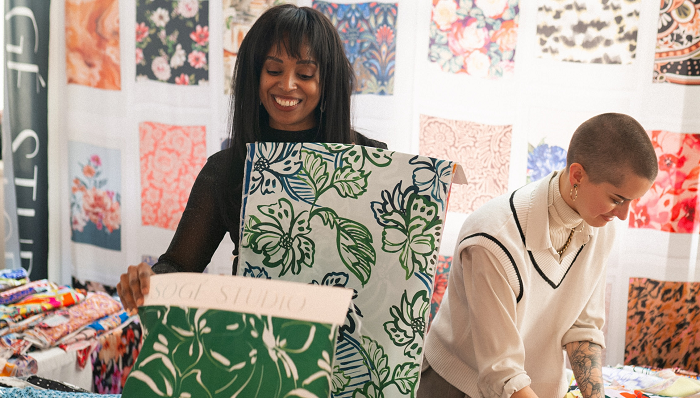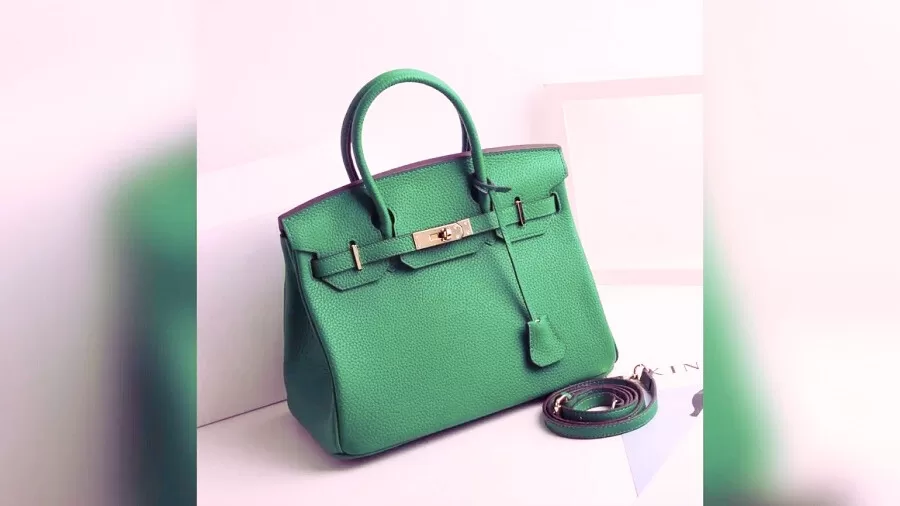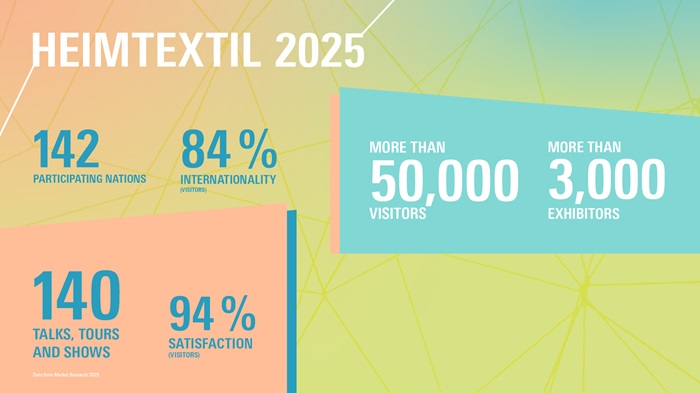FW
Senol Sankaya, CEO of Turkish knitted garments producer Yesim Tekstil has been elected to the board of managers of the International Apparel Federation (IAF) for the second time. IAF is one of the largest federations for apparel and garment industry. Sankaya, who is also the Chairman of Uludag Exporters Union for Apparel and Ready Wear (UHKİB), will continue to represent the Turkish apparel sector at the international level.
In 2010, after Hasan Arat and Umut Oran, Sankaya represented Turkey in the board of managers of IAF, established in 1976 by a group of apparel sector representatives from America, Europe and Japan. With many members around the world, IAF organises congresses, meetings and publishes reports in order to provide direction and information to the companies in the apparel sector. The federation, which also creates an important global information network for the apparel sector, provides the platform to its customers to monitor developments in the sector.
Yesim Tekstil has a daily production capacity of 55 tons of knitted products, 70 tons dyed, 100,000 metres of printed fabric, 150,000 pieces of garments and 60,000 pieces of home textiles. Being one of the four largest fully integrated yarn-to-finished-product facilities under one roof, the company is one of Turkey’s largest firms. A production partner of the Nike brand since 2005, Yesim Tekstil also manufactures for internationally renowned brands such as Gap, Banana Republic, Old Navy, Zara, Pull & Bear, Massimo Dutti, Esprit, Hugo Boss, Lands' End, Tchibo and Schlafgut.
Iafnet.eu
www.yesim.com.tr
On April 24, the 3rd edition of sustainable fashion event, 'Copenhagen Fashion Summit' will take place in Denmark. This is the platform where leading voices from the world of fashion, luxury, business and enterprise meet to discuss the fashion industry’s social and environmental responsibility and solutions. Première Vision has been chosen to represent the textile industry during the summit.
Première Vision, organisers for the last few seasons have been observing how weavers and fabric designers tend to develop new products with a will to be both creative and sustainable. And now it wishes to speak out on these new opportunities, which has already been voiced through conferences, collaborations and different actions during its shows.
In Copenhagen, Chantal Malingrey, Marketing and Development Director of Première Vision will join a panel discussion with other experts from luxury and commercial fashion, as well as NGOs and media to discuss how changes and moves can be made in the industry towards sustainability and responsibility, starting with fabrics and materials.
The panel discussion moderated by Vanessa Friedman, Fashion Editor, Financial Times will include panelists like: Marco Lucietti, Global Marketing Director, ISKO, Giusy Bettoni, CEO and Founder, C.L.A.S.S. and Catarina Midby, Head of Sustainable Fashion, H&M.
www.copenhagenfashionsummit.com
More than 100 sub-contracting apparel factories in Bangladesh, mostly non-compliant ones, have closed and many others are on the verge of closure for want of sufficient work. The sub-contracting factories have long been facing dearth of work as big garment makers, who take work orders directly, are either turning away from the third parties or are opting for the compliant ones in the face of strict monitoring of safety measures by the buyers.
Lower volume of manufacturing work of their mother companies has also played a role. The sub-contracting factories are said to engage child labor in production. Fire safety measures and exit facilities are hardly found. They don’t make payments on time. And after some incidents involving fire and building collapses, buyers have become cautious about working with such factories.
The sub-contracting firms number 1,500 to 2,000 and are mostly located at rented and unhygienic houses in industrial zones of Bangladesh. The Bangladesh Garment Manufacturers and Exporters Association is helping sub-contracting factories upgrade themselves and become compliant. Some such units have been trying to upgrade their factories to compliant ones but have failed to obtain certifications from the concerned authorities as they have to fulfill a number of criteria.
The International Association for the Nonwovens and Related Industries (EDANA) and MP Expositions, the organiser of ITMA 2015, have signed a memorandum of understanding, to help organize a conference on nonwovens during ITMA 2015. For more than 40 years, EDANA has served its member companies through a number of programs and events designed to bring the industry together. It helps the textile and nonwoven industry reach out to a wider audience through greater innovations and education.
ITMA is the world’s largest textile and garment technology exhibition which showcases the entire value chain. Since the introduction of the fiber and yarn sector at ITMA 2011, there is growing emphasis on solutions for nonwovens and technical textiles. Visitors are able to witness the interaction of materials and chemicals with machines on the spot during live demonstrations.
The European Committee of Textile Machinery Manufacturers comprises national textile machinery associations from Belgium, France, Germany, Italy, Netherlands, Spain, Sweden, Switzerland and the United Kingdom. It is the owner of ITMA and ITMA ASIA. Considered the Olympics of textile machinery exhibitions, ITMA has a 64-year-old history. It is held every four years in Europe. EDANA serves more than 240 companies across 36 countries in the nonwovens and related industries.
www.itma.com/
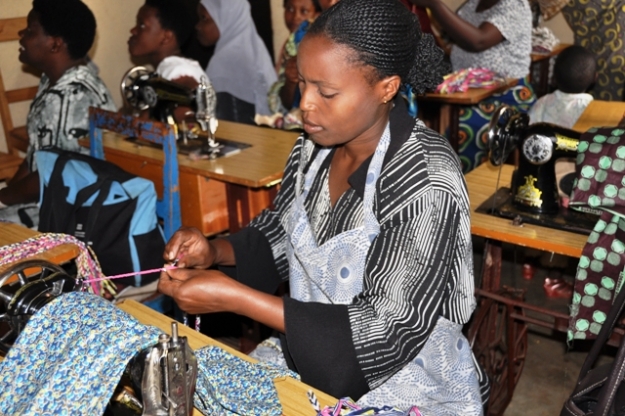 Origin Africa, the Trade Hub aims to change the perception of Africa. The Trade Hub recently conducted a seminar called ‘The African Growth and Opportunity Act (AGOA) and Doing Business with Africa – Sourcing from (and Selling to) African Apparel Exporters’ at the recently concluded Interstoff Asia Essential event in Hong Kong. The seminar explored the incentives available to Asia-based companies for supplying fabrics and accessories to African apparel companies under AGOA’s third-country fabric provision. This allows, African apparel manufacturers to import and use fabrics from outside in garments production and still benefit from AGOA’s duty-free treatment for shipments to the US.
Origin Africa, the Trade Hub aims to change the perception of Africa. The Trade Hub recently conducted a seminar called ‘The African Growth and Opportunity Act (AGOA) and Doing Business with Africa – Sourcing from (and Selling to) African Apparel Exporters’ at the recently concluded Interstoff Asia Essential event in Hong Kong. The seminar explored the incentives available to Asia-based companies for supplying fabrics and accessories to African apparel companies under AGOA’s third-country fabric provision. This allows, African apparel manufacturers to import and use fabrics from outside in garments production and still benefit from AGOA’s duty-free treatment for shipments to the US.
An initiative to boost trade, change image
Origin Africa was incepted with the aim of changing the perception of Africa. “We try to help companies in Africa to sell primarily to the Americas. We conduct trade shows in the US that highlight the real situation in Africa and invite buyers to Africa. Africa is not just about basic products. It’s about creative fashion products and we encourage buyers to look at us as a sourcing destination,” says Finn Holm-Olsen, AGOA Trade Advisor, Origin Africa.
Revealing details about Origin Africa, J C Mazingue, Apparel Trade Advisor explains, “We  are from Nairobi and are with a group called East Africa Trade, sponsored and funded by the US. We help companies in Africa sell and export primarily to the US. The majority of trade is in garments. We have a campaign called ‘Origin Africa’ and wish to put Africa on the map as a sourcing destination with the US buying community as our main target. In short, we want to change perceptions about doing business in Africa.”
are from Nairobi and are with a group called East Africa Trade, sponsored and funded by the US. We help companies in Africa sell and export primarily to the US. The majority of trade is in garments. We have a campaign called ‘Origin Africa’ and wish to put Africa on the map as a sourcing destination with the US buying community as our main target. In short, we want to change perceptions about doing business in Africa.”
The majority of items traded under AGOA are garments. AGOA also supplies fabrics, trims and accessories to factories in Africa that sell apparels to the US. African factories suffer a lack of vertical integration. “AGOA covers trade preferences. The act was signed in 2000 and allows duty free entry into the US for any good produced in Africa. It extended the previous Generalized System of Preferences program, which allowed 4,500 products to enter the US duty free. It brought apparel into the duty free regime. The AGOA program is in effect till 2015. It allows apparel headed for the US from Africa to contain fabric made anywhere in the world. In east Africa, Kenya, Mauritius and Ethiopia are powerhouses in textiles and apparels. US companies are looking to source from Africa and are setting up offices. We are confident of the long term extension of AGOA,” Mazingue adds.
The Trade Hub working continuously to improve African cotton and textile including production, supplies of textiles and accessories. Elaborating further Olsen says, “AGOA aims to improve economies in Africa. The objective is to increase the level of investment in Africa so that we have a better trading partner.”
However, the continent faces numerous challenges. For example, there are four different political entities: Economic Community of West African States (ECOWAS), Southern African Development Community (SADC), East Africa Community (EAC), Common Market for East and South Africa (COMESA). Each of these has their own policies and duties. Moreover road networks need to improve and regional trade needs to pick up.
Olsen points out that the buying power of South Africa is higher compared to others. “Five of the 10 fastest growing economies are in Africa and they include Ethiopia, Angola and Nigeria. The continent will soon be of a billion people, probably the second biggest market in terms of population globally. To cater to this vast population, FDI is needed.” He further adds, “Countries like India, China, and Turkey are interested in investing. China is a strong co-investor as it has taken lead in logistics and road networks, whereas India is interested in investing in manufacturing, the US is investing in energy and power plants.”
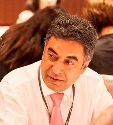 China is coming up with a new policy in cotton that is expected to impact world trade in the fibre. Jaswinder Bedi, Chairman, The African Cotton & Textile Industries Federation (ACTIF) gives an insight on cotton world market to FashionatingWorld and shares the impact of China’s new cotton policy on India. Excerpts…
China is coming up with a new policy in cotton that is expected to impact world trade in the fibre. Jaswinder Bedi, Chairman, The African Cotton & Textile Industries Federation (ACTIF) gives an insight on cotton world market to FashionatingWorld and shares the impact of China’s new cotton policy on India. Excerpts…
What is the estimated size of world's cotton production?
The size of the pie is 25-26 million tons that is the total cotton production. When broken down, China grows about 6 million tons and imports around 6 million tons from the US. India grows about 5.5 million tons and consumes around 4.5 million tons and has a surplus of about one million ton. Between China and India they dominate with more than 50 per cent of the world’s entire cotton production. The US is also a large player, as it grows about 4.5 million tons and consumes about a million tons, so they have a surplus of 3.5 million tons. That is the reason they probably are the largest exporter of cotton followed by India, Pakistan, Australia, Africa. In a nutshell, the true dominant players in cotton are India, China and the US.
Have you accounted for the business of cotton going from India to China as yarns?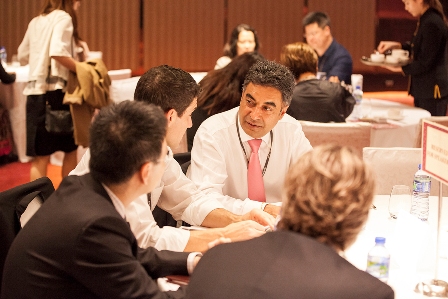
India consumes 4.5 million tons in its factories but exports one million ton in raw form or raw cotton to China or other countries including Pakistan. Yarn is a big business in India with about 30 million spindles today. China has 67 million spindles, so India is the 2nd largest spinner in the world and the 3rd largest is Pakistan as they have 12 million spindles. With such a large spindleage their consumption of cotton is large. In the last seven years, we have seen India transform from a net importer to a net exporter and that is primarily because they moved from conventional cotton to GM cotton, which gives them the yield they are looking for.
What situation do you foresee after China offloads its cotton stock reserves?
China has minimum a reserve price and the cotton they have bought at higher prices have become a problem for them. So they have to shut down over a million spindles. I think it was cheaper to buy yarn from India than to spin in China because if you are buying your minimum reserve is a 120 cents and the world price is at 90 cents and it does not help to run your spindles. China is not in a hurry to offload stocks because if they offload they will disrupt the world like it happened two years ago. They cannot afford it as they have already bought them at a higher price and selling it at a lower price would mean China would be shooting themselves in the foot. It is better to slowly release their strategic reserve. The Chinese government is coming up with a new policy which will be more market friendly. We don’t know what the policy will at this stage. I think it will be difficult for us to project the future. It depends on the Chinese government and their minimum support price that they give the farmer.
How much time will it take for the slow phasing of the stocks?
It can be done in the next 12 months. All they need to do is not buy more stock.
What kind of global yarn or cotton trade do you perceive post this phase?
Global cotton trade used to be 50 per cent of all fibres but today it is only 30 per cent. World consumption of all fibres is 80 million tons and cotton forms 25 million tons out of the 80, which is 30 per cent. The world’s other markets are taking greater market share. I wouldn’t say cotton is losing its share but as a percentage of the overall pie it is shrinking.
What is in store for India post China’s stock offloaded?
For India it will be a big thing. Four and a half million is by no means small production but all the other fibres are competing with cotton. Polyester has dropped to less than 70 cents a pound and that is going to have an impact on cotton. Export to China will slow down because Chinese production will recommence again.
Garment exports in Bangladesh are gaining ground in non-traditional markets. In fact non-traditional markets are rising faster than traditional ones. In fiscal 2012-13, Bangladesh’s garment exports to non-traditional markets such as Australia, Brazil, Chile, China, India, Japan, South Korea, Mexico, Russia, South Africa, Turkey and so on rose 29 per cent year-on-year. In contrast, exports to traditional markets of the US, Canada and European Union were up 10.93 per cent year-on-year.
In 2009, Bangladesh introduced a financial package to encourage garment manufacturers to explore new destinations. Under the scheme, the government gave 5 per cent cash incentives to exporters in fiscal 2009-10, 4 per cent in fiscal 2010-11 and 2 per cent in fiscal 2011-12. Exporters are still receiving 2 per cent cash incentive for exporting to new destinations.
During this period, some countries have given duty-access to Bangladesh. Japan relaxed the Rules of Origin from April 1, 2011, which boosted exports to the country. Similarly, India extended zero-duty benefit to all products except 25 alcoholic and drug items from November 2011. In 2011, China also gave duty benefits to Bangladesh on export of 4,721 products which include garments. Chile has announced duty-free benefits for all Bangladeshi products from January next year. South Korea has also given duty benefits to some Bangladeshi garment items.
The leading international fair for residential and contract textiles, Heimtextil, will present a whole new concept for its trend show in 2015. It plans to expand it into a ‘theme park’. The overall responsibility for the new theme park has been delegated to Stijlinstituut Amsterdam. Experts from six international design studios met in March 2014 for the annual Trendtable to exchange ideas and opinions on global design developments. The outcome of this discussion will form the creative basis for the innovative theme park at next year’s show.
During the Trendtable, each design studio presents its own trend predictions, with these predictions being discussed and refined. At this year’s Trendtable, the designers presented a variety of future-oriented projects covering architecture, interior design, fashion, art and lifestyle. The theme park will focus on the topics of hospitality, sustainability and colour. Dedicated presentation zones will display trends and new themes.
Participating design studios at the Trendtable included Lisa White, Creative Director of Homebuildlife /WGSN, USA, Felix Diener, textile designer at Studio Felix Diener, Germany, Mayouri Sengchanh of Exalis / Carlin International, France, Kate Franklin and Caroline Till of FranklinTill Studio, UK, Dan and Gen Namura of Dan Project, Japan and Anne Marie Commandeur, Grietje Schepers, and Anouk Haegens of Stijlinstituut Amsterdam, Netherlands.
www.heimtextil.messefrankfurt.com
The textile industry in Pakistan's Punjab province is passing through difficult times. It's battered by gas shortages, rising exchange rate and a high cost of electricity. A good number of factories are on the verge of closure.
Around 70 per cent of Pakistan's textile industry is located in Punjab. The main problem is shortage of gas. Punjab’s textile industry is being deprived of gas supplies and is getting just one quarter of its allocated gas supply. Other sectors of the economy that fall below on the priority list of gas companies are getting more gas than what is being supplied to the textile industry.
For many units, shortage of gas means that more than two-thirds of their installed capacity is lying idle. The industry is being supplied gas only six hours a day, and facing power cuts of eight hours a day, causing production disruptions.
On top of energy shortages, textile exporters contend that the appreciating exchange rate and rising cost of production are wiping out their liquidity. Partial gas supplies and power cuts mean they are losing money owing to the rupee revaluation against exports and committed future orders.
Pakistani investors, tired of the acute energy shortage and fluctuating tariffs of utilities, had set up textile units in Bangladesh looking for a better option. But now they feel they should not have relocated. For one, the policies of the Bangladeshi government have created insecurity among Pakistani investors. They are finding the system difficult to deal with. And Bangladesh on its part feels Pakistan has gone to town over the collapse of a textile factory building in Dhaka and given that country bad press.
Meanwhile investors in Bangladesh are worried and insecure. As a result new Pakistani investors have scrapped their plans to set up units in Bangladesh. Pakistan has attained the GSP-Plus status, but its energy crisis, huge tax rate, no rebate, delays in refunds and other such issues have played spoilt sport. All these factors had prompted many Pakistan-based units to shift to Bangladesh.
Most of the set up in Bangladesh were that of home textile en-cashing on the duty-free access that Bangladesh-based factories have in EU being least developed country . But the grant of GSP Plus status to Pakistan means that Pakistani local exporters have been provided the same facility back home.

